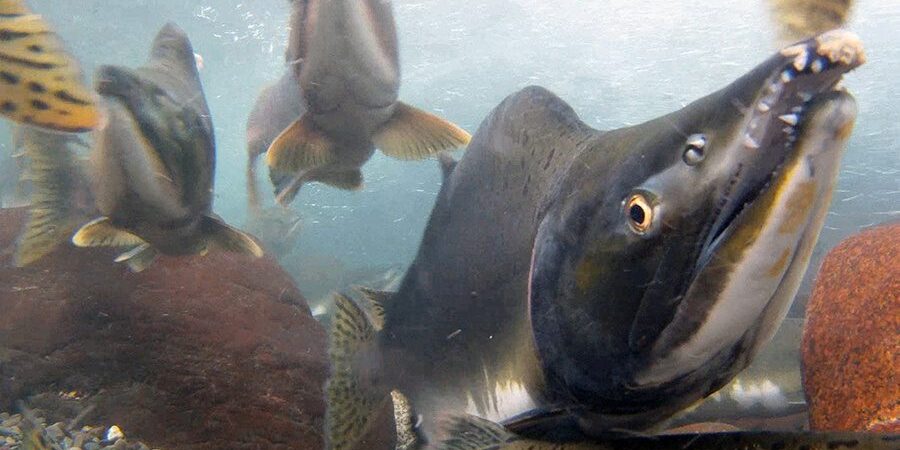Despite a disappointing salmon season and continuous ecosystem-wide change in the Bering Sea region, recent pink salmon runs across the region have been much larger than ever before.
In what is considered a “climate change success story,” pink salmon in the Norton Sound region have been thriving after dropping to severely low numbers in the early 2000s.
Ed Farley, Program Manager for the Ecosystem Monitoring and Assessment Program at the Alaska Fisheries Science Center, presented decades of research that indicate that this is caused by the warmer waters. Farley gave this online presentation during a Strait Science event at UAF Northwest Campus on November 12.
“But the take-home here is that the freshwater and early marine conditions, especially freshwater, are likely driving production, and that warmer appears to be better.”
– Ed Farley
Temperatures in the Bering Sea have been rising for a while, and according to research, the warmer temperatures show no signs of stopping. Sea temperatures have been steadily rising, even leading to periodic heatwaves, according to NOAA. This year, sea temperatures were 3 degrees Celsius higher than typical, making 2020 the second lowest minimum sea ice extent. With a decrease in sea ice and a diminishing cold pool, pink salmon are one of very few cases where marine life has benefitted from warming temperatures.
Pink salmon go through a two-year cycle. After spawning they spend one year in freshwater environments until they are a smolt, then spend a year in marine ecosystems until they have reached adult age. Farley says that warmer temperatures in the Bering Sea mean higher metabolism and higher growth rate for salmon, meaning less predation during winter at sea.
“Their metabolism is going to be based on temperatures from the sea, so with food and higher temperatures, we expect them to grow faster, and the faster they grow likely helps them reduce predation risk.”
– Ed Farley
Although pink salmon are benefitting from the rise in water temperatures, other species of salmon are not showing the same increase in numbers as pinks. Farley says that more research needs to be done on species like coho salmon to see how both water temperatures and greater numbers of pink salmon may impact them. But for now, it seems that there is little correlation.
“I know that we looked at coho salmon diets, and there doesn’t seem to be much overlap with the pink salmon diets, and so as far as what’s happening after they leave that shelf area in the Northern Bering Sea if there’s any competition, I’m not sure. I know that we’re trying to look more into coho right now.”
– Ed Farley
The pink salmon juvenile index will help researchers determine expected numbers for runs next year. Farley says that the Alaska Fisheries Center is performing more research in the near future to determine how these warmer temperatures may impact the runs of other species of salmon.
Image at top: A cluster of pink salmon. Photo courtesy of NOAA Fisheries (2020).




